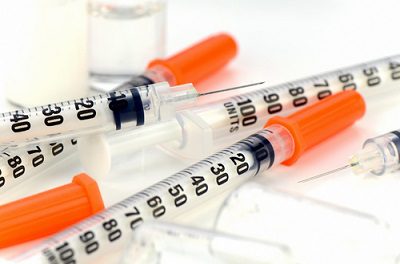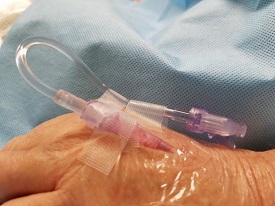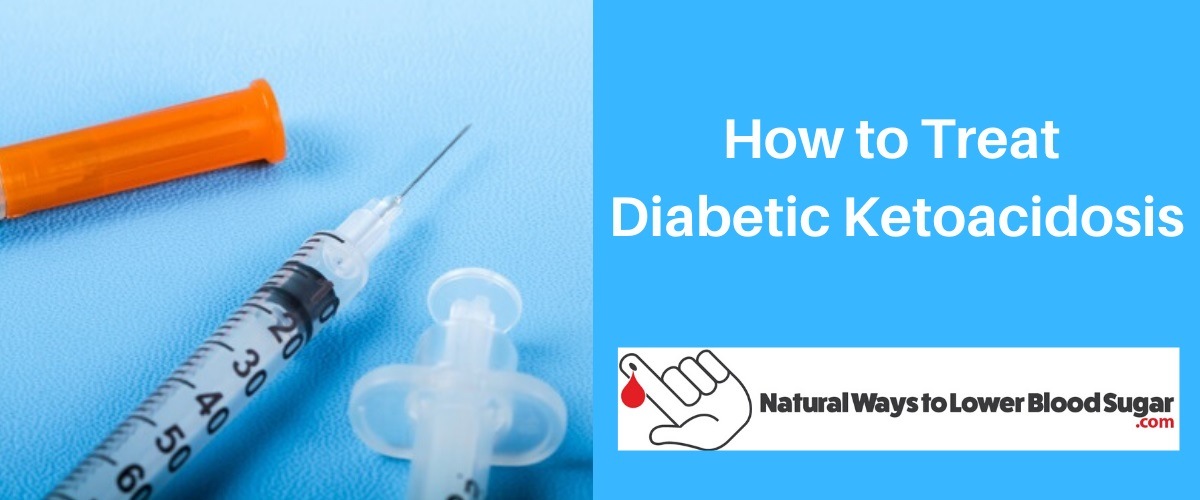Diabetic ketoacidosis (DKA) is a high-risk and life-threatening complication that diabetics are vulnerable to, but can be treated for. It is created by an insufficiency of insulin in the body. This medical condition is most likely to occur in patients with Type 1 Diabetes. You will learn more about How To Treat Diabetic Ketoacidosis.
What you need to know about Diabetic Ketoacidosis
The complication arises when there is an absolute shortage of the patient’s supply of insulin. Due to this shortage, the body reverts to burning the fatty acids in the body and produces acidic ketone bodies. This becomes a complication since it can lead to unconsciousness, and if not treated can be fatal. All the more reason to be extremely aware!

Diabetic ketoacidosis occurs when the body is unable to use blood sugar because there is not enough insulin. Your ketones can also go up when you miss a meal, especially breakfast. It can also occur when you are sick or stressed, or you have an insulin reaction.
Diabetic Ketoacidosis can happen to people with type 2 diabetes, but on a rare occasion. It is seen as the biggest medical emergency related to diabetes. It’s also severe morbidity in children with diabetes.
When there is not enough insulin in the body, the person is dehydrated and too many ketones are present in the bloodstream thereby, making it acidic.
The human body depends on glucose (sugar) that is controlled within the blood. This is an appropriate reference. Glucose is absolutely necessary when it comes to providing energy that the body requires to properly maintain itself. If the glucose levels become low in the body, the healthy cells will increase in on the fat that is stored in the body, and the same with the muscles. You do not want this happening.
Gradually, it will break these areas down in order to develop the energy that is required for essential human maintenance. As these components in the body continue to break down, the bloodstream becomes overloaded with ketones, small deposits of acid that are considered to be fatty, thereby making a natural imbalance of the substances and chemicals that are produced within the healthy human body, also known as metabolic acidosis.
Usually, diabetic ketoacidosis is due to undiagnosed diabetes, but may also apply to patients who have been diagnosed, but have failed to take the insulin as prescribed. Diabetic ketoacidosis is an important cause of mortality in patients with insulin-dependent diabetes if it is left unchecked. It is linked to a reduced glucose cycle and commences with a deficiency in insulin. So it’s always crucial to know what your insulin numbers are. Always stay on top of them.

When the case is severe, you may find it difficult in breathing, you may have a brain swell also known as cerebral edema and you will have the risk of coma. Loss of life due to diabetic ketoacidosis is clearly connected to the delay in the institution of the appropriate therapy in a hospital setting.
You don’t ever want to lose sight of what could happen if it gets too severe and this is where you will wind up.
Diabetic Ketoacidosis Symptoms
There are common symptoms of Diabetic Ketoacidosis and they develop very quickly. When ketones are at high levels, they usually build up in the blood and urine, causing the following symptoms of Diabetic Ketoacidosis:
- Nausea & Vomiting
- Shortness of Breath
- Weakness or Fatigue
- Fruity Scented Breath
- Loss of Appetite
- Confusion
- Fruity-scented breath
- High blood glucose
- Abdominal pain; very common in children
- Decreased perspiration.
- Cool and dry skin.
- Deep and labored breathing
- Excessive thirst and urination.
- Stiff muscles with pain
In 25% of those suffering from Type 1 diabetes, ketoacidosis is eventually developed through the deficiency of insulin and hyperglycemia. The factor that will determine whether each patient lives or dies depends on how quickly the disease is identified and treated.
As long as the disease is managed properly by a doctor, there is no reason for anyone with diabetic ketoacidosis to lose their life. It’s common sense that you must use in this situation. Make sure that your doctor is 100% involved here! He or she is the professional. I always leave it in the hands of the professionals.
[elementor-template id=”11971″]
Causes of Diabetic Ketoacidosis
DKA can often be activated by an illness or a problem with insulin treatment of a diabetic patient. They can also be triggered by other factors outside these common factors. An infection or another type of illness can cause your body to produce higher levels hormones of different types, such as adrenaline. Unfortunately, these hormones counter the effect of insulin, sometimes causing an episode of diabetic ketoacidosis. Common culprits are urinary and pneumonia.
- High Fever
- Surgery
- Physical or Emotional Trauma
- Alcohol or Drug Abuse
- Stroke
- Heart Attack
- Stress
Ketoacidosis causes to type 2 diabetic patients include; A serious illness, infection, injury, missing doses of insulin shots, or surgery can lead to DKA in people male or female, even though type 2 diabetes DKA can be less common and less severe. But it doesn’t mean that should just shrug it off. It’s still a vital issue that must be addressed. Please take this seriously?
If you think you are experiencing Diabetic Ketoacidosis, it is important to know the right time to call the doctor. The best thing is to alert your physician once your blood sugar reaches 350 mg and above. And if diabetic patients start vomiting and having a high fever, you should not hesitate to call your doctor. Never hesitate with the decision of getting your doctor involved.
Treatment
Treatment for DKA often involves fluid replacement orally or through an IV, electrolyte replacement, and insulin treatment. There are other cases where the patient will need further treatment which is best to follow what the physician recommends. But as I mentioned before it should always be his or her call as to how to attend to it.
To treat DKA, you may have to go to the hospital and probably get insulin through an IV to bring your ketones down and fluids to get you hydrated and bring your blood chemistry back into balance. If you don’t treat ketoacidosis, you can pass out or to enter into a coma, and possibly die. The best advice is to NEVER wait! Waiting can be a HUGE mistake!

You can also begin intravenous fluids previous to insulin therapy. It is necessary to check potassium levels before the the starting of insulin therapy or supplement potassium intravenously if need be. These are all the issues your doctor and staff will know and take care of.
In case blood glucose falls below 14 mmol/L (250 mg/dL), an addition of 10% glucose should be allowed for the continuation of fixed-rate insulin infusion.
When it is established that one is a patient with diabetes, SC long-acting insulin should commence at the dose that was used prior to the indication of DKA. This is another issue that the medical team has the expertise about, so not to worry.
Diabetic ketoacidosis can be corrected in about 24-48 hours with appropriate treatment like fluid replacement and insulin therapy. Most often the duration of therapy is about 48 hours depending on how server the case is.
Detailed Symptoms
There are a number of symptoms that may be associated with an individual experiencing ketoacidosis directly related to glucose levels in the body. According to research, many people are unable to experience symptoms until the glucose levels start displaying radical figures in the body.
Hence the need for anyone with diabetes to be aware of the warning signs of diabetic ketoacidosis. Here are some signs and symptoms that may be associated with this devastating condition:
- One of the first symptoms usually appears in the skin. The person may look pale, feel extremely hot and dry in the body. Some persons may notice dryness on their lip.
- Due to the imbalance of the body chemical, the vision may be affected. With this particular condition, the individual experience blurred vision that is very troublesome.
- There is a symptom that is related to the smell of the breath. It occurs when the glucose levels in the body are at hazardous levels.
- Extremely tiredness and weakness for no reason sets in. This may result in a lack of interest in basic activities that ordinarily you enjoy doing.
- Lack of interest in eating, which results in physical illness.
- The individual is often confused and disorganized.
Prevention of Diabetic Ketoacidosis
There’s much you can do to prevent diabetic ketoacidosis complications. Some of these methods have worked in the preventive measure of DKA.
- The first preventive step that you can take is to ensure that you carefully monitor your blood glucose levels.
- If you take insulin, it is important to stay on top of these treatments. Take is as needed.
- Check your ketone level.

Hospital
The hospital may give you saline solution fluid and glucose to ensure proper hydration and balance the sugar level respectively. But it is important to understand that the process may not be quick but it is an effective process.
Prevention they say, is better than cure. Therefore, adhere strictly to your diabetes management, monitoring your blood sugar levels, checking your ketone level, and adjust your insulin dosage whenever needed. Remember the saying and stick to it: “An ounce of prevention is worth a pound of cure.”
To improve on this prevention strategy of repercussions that are life-threatening of diabetic ketoacidosis, strong replacement of fluids with normal saline is the basis of therapy for diabetic ketoacidosis.
The replacement of the fluid was in existence before even the advent of insulin therapy. Another important aspect of rehydration treatment in patients with diabetic ketoacidosis is the replacement of ongoing urinary harms. We all know how important it is to stay hydrated.
If this life-threatening condition called diabetic ketoacidosis is properly and immediately treated, most people will recover completely from it. You need to begin treatment of diabetic ketoacidosis immediately once it is diagnosed. The reason is the condition can quickly deteriorate and the treatment of diabetic ketoacidosis involves constant administering of insulin in low doses to bring down glucose levels.
Final Thoughts about Diabetic Ketoacidosis
I hope this article has helped you. This subject is very important to me and I hope that I’ve helped you with regards on How To Treat Diabetic Ketoacidosis.. It’s not something to take lightly for sure.
The most important thing you can do with your type 2 diabetes is to check it regularly and get it under control. Talk things over with your doctor and listen to and do what he or she says to do. Stay on top of things and you’ll do fine. Please take care of yourself and see your doctor regularly!
[elementor-template id=”11971″]
- Amazon Kindle Edition
- Rothchild, Sascha (Author)
- English (Publication Language)
- 336 Pages - 04/19/2022 (Publication Date) - G.P. Putnam's Sons (Publisher)
- ✅ QUICK AND EASY TO USE: Care Touch blood sugar test kit delivers results in only 5 seconds with just a 0.5µL blood sample. There is no programming needed since our blood sugar monitor kit automatically recognizes batch codes encrypted on Care Touch glucose test strips. Our state-of-the-art glucometer kit with strips and lancets includes single-touch strip ejection, so you can hygienically remove used diabetic test strips.
- ✅ EASY DIABETIC MONITORING: The blood sugar monitor kit with strips is capable of saving up to 300 readings. The blood glucose test kit also provides a continuous 14-day average of your readings, making glucose monitoring easy for you and your healthcare provider.
- ✅ PORTABLE AND HASSLE-FREE: The diabetic testing kit comes with a handy glucometer case, which means you can check your blood sugar level at home or anywhere else while staying organized. The 10-depth lancing device and lancets will help make blood sugar testing almost painless and hassle-free.
- ✅ COMPLETE DIABETIC SET: The glucose meter kit with strips and lancets includes: (1) Care Touch Blood Sugar Meter, (100) Blood Glucose Test Strips for diabetes, (1) Lancing Device, (100) Lancets for diabetes testing, (1) 3 Volt Lithium Battery, (1) Glucose meter case for your blood sugar tester and diabetic supplies
- ✅ WE CARE BECAUSE YOU CARE: You care about your health, and we care about you. Care Touch is committed to providing the best quality blood glucose monitoring systems. Our care doesn’t end when your sugar tester diabetes kit arrives at your door. We’re fully dedicated to your satisfaction. If you have any questions or concerns about your glucose monitor kit with strips and lancets - contact us at any time.
- Amazon Prime Video (Video on Demand)
- English (Playback Language)
- English (Subtitle)
- PUREHEALTH RESEARCH - Blood Sugar Formula 3 Bottles
- MANUFACTURED in the USA! 365-DAY SATISFACTION GUARANTEED!
- A DOCTOR-APPROVED NATURAL FORMULA. Seventeen potent ingredients, each scientifically proven to have a significant effect at helping balance your glucose levels, improve glucose sensitivity, protect delicate cells from free radicals, and energy
- HIGH POTENCY. PureHealth Research experts scientifically enhance CHROMIUM with the Vitamin C, E, Mulberry Leaf, Bitter Melon, Cinnamon, L-Taurine, Berberin and other ingredients which are proven to help you support healthy blood glucose levels
- ONE CAPSULE DAILY, THREE BENEFITS: supports healthy sugar and carb absorption, supports insulin levels, supports cardiovascular health
- Scientifically formulated; great care was put into combining just the right amount of 20 different ingredients into a premium formula designed to support healthy blood sugar levels
- High potency support for 365 days a year; the unique combination in this blend is crafted to help support healthy glucose absorption and glucose production by your body; contains Gymnema, Alpha Lipoic Acid, Yarrow, Licorice, Cayenne, Banaba, Guggul, Bitter Melon, Juniper Berry, White Mulberry, L-Taurine & more
- One capsule twice a day, five benefits; (1) supports normal blood sugar levels; (2) supports weight control and energy; (3) supports healthy sugar and carb absorption; (4) supports insulin levels; (5) supports heart health; daily support for healthy blood glucose levels, 365 days a year
- Reliable; made in a GMP certified facility in America and third party safety tested for purity
- Great value for money; 120 vegetarian capsules for a 60 days supply
Last update on 2022-06-23 / Affiliate links / Images from Amazon Product Advertising API










I don’t have diabetes but I drink a mix of 8-12 oz of water mixed with 1Tbsp Bragg Apple Cider Vinegar and 1 Tblsp Black Strap Molasses twice a day to maintain the pH in my body. It is very beneficial and I wonder if it would help sufferers of diabetes. Of course this is no substitute for insulin injections if needed, drinking plenty of water and not missing any meals, especially breakfast.
Hey Alexander,
Anytime you have apple cider vinegar, it can only help. Diabetic ketoacidosis can be a dangerous condition so it’s a smart idea to prevent it.
Keeping your blood sugars under control, eating healthy and exercising are the three best things you can do to avoid diabetic ketoacidosis.
I do like your drink and it’s a wise choice whether you have diabetes or not.
Thank you for sharing 🙂
Nice, I was just talking to a guy I work with about this, so cool that I came across this site. I will be sure to pass it on to him, since he is the one who can really benefit from it. Great information and detail though. Thank you for the time and effort that you have taken to present this to people so that they can become healthier.
What a coincidence, right?
Diabetic ketoacidosis is serious stuff. I think all diabetics should know about it.
I hope you do pass this on to him because he would appreciate it I’m sure.
The more we know when we have diabetes, the better. Controlling your diabetes is of the utmost importance.
Thanks for your comments 🙂
Very interesting – I did not know any of this about diabetes. What particularly interested me was the mention that if you missed a meal then your blood sugar will go up. Can you confirm therefore that eating some breakfast will help control blood sugar.
Also can you reduce your blood sugar level by reducing your carbohydrate intake?
Hey David,
One of the best things you can do about avoiding diabetic ketoacidosis and any sugar problems for that matter is to eat meals on a consistent basis.
Eating breakfast is so important as you can read HERE
And yes you can lower your blood sugars by reducing your carbohydrate intake!
Thanks for your comments!
Thanks for the informative and helpful post, Rob! Much appreciated! I cherished a lot of informative ideas that you put across to the world about the terrible condition popularly known as “Diabetic ketoacidosis (DKA)”. It’s a well-packaged and revolutionary blog post for both the diabetic patients and the rest.
Kudos to you for mentioning in that post that it’s caused by an absolute shortage of insulin in the body of the diabetic patient and it can be cured. The effects of this condition in the patient’s body include high fever, stroke, and others.
Thanks for stating the common symptoms of Diabetic Ketoacidosis which include fruity scented breath, loss of appetite, Confusion, and many more, and for making it known that they develop so quickly!
Israel Olatunji
Hey Israel,
First off, you’re welcome! I don’t want anybody to suffer through anything if there’s a way to prevent it.
Diabetic Ketoacidosis is dangerous and that’s why once you are diagnosed with diabetes, it’s vital to get it under control.
You don’t want your condition of diabetes to get to this point. It’s easier and a much better decision to get your blood sugars under control and keep them that way.
But it’s very helpful to know the symptoms of diabetic ketoacidosis so you can treat it promptly!
Thank you for your insight 🙂
Could you say whether we need prescription for this? Your article is very well written. The content is considerable with provided value about diabetic ketoacidosis in the article. Also there are comparable webpages about DKA that should be as informative as the above article. This style is clean and the facts are verifiable.
The bottom line with diabetic ketoacidosis is that everyone is different and your doctor is the one to make the call when it comes to prescribing anything.
There is enough information I believe to help avoid this condition and I would follow them.
But always consult with your physician when it comes to something as serious as DKA.
Thank you!